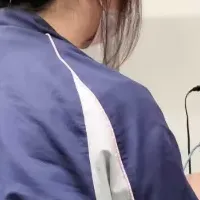
IEEE Forecasts the Most Impactful Technology Trends for 2025 Revealing AI, Drones, and Wearables
IEEE Predicts 2025's Top Technology Trends
The IEEE Computer Society has released its annual report on top technology trends for 2025, highlighting innovations poised to reshape the computer engineering landscape for years to come. Topping the list are advancements in artificial intelligence and robotics, which promise to redefine how consumers and businesses interact with technology.
Key Predictions
According to Dejan Milojicic, Chair of the IEEE Computer Society Technology Predictions Committee, this year’s report reflects ongoing trends while positioning the community to leverage emerging opportunities effectively. The committee assessed various technologies based on their potential for commercial success, impact on humanity, and maturity, assigning letter grades similar to a U.S. educational system.
1. New AI Deployment Strategies
The committee anticipates that 2025 will witness an expansion in the accessibility of Large Language Models (LLMs). Open-source developments will allow more companies to harness the power of these models, resulting in the emergence of Small Language Models that address specific industry needs more efficiently, transforming sectors through more specialized AI solutions.
2. Expansion of Drone Services
Drones will take a significant leap with the introduction of Drone-as-a-Service (DaaS). By 2025, industries such as logistics and agriculture will integrate drones into their operations for cost-effective, efficient responses to challenges. Significant enhancements in drone technology, including energy efficiency and size optimization, will facilitate broader adoption across diverse sectors.
3. Growth of AI Agents
The advent of sophisticated AI agents is expected to streamline operations in finance and manufacturing. These agents will integrate LLMs with machine learning and rule-based systems, allowing businesses to automate tasks more effectively. With advancements in cloud computing, these AI agents will also become increasingly user-friendly and accessible to various industries.
4. Increased Robotics Capabilities
Robotic technologies will enhance their abilities to interact with dynamic environments more autonomously. As embodied intelligence continues to evolve, robots will learn to adapt and collaborate more efficiently, driven by innovations in AI, computer vision, and real-time data analytics. This integration will change how we consider robotics in everyday applications.
5. Wearable Health Technologies
Wearables are moving from basic fitness tracking towards becoming critical tools for monitoring health conditions. By 2025, advancements will enable wearables to detect biomarkers for early disease indications and support proactive wellness efforts, ensuring timely healthcare interventions through technological integration.
Additional Trends
Beyond these five primary technologies, several other advances are anticipated to flourish, including the convergence of IT and energy, augmented AI, autonomous driving innovations, and new solutions for AI-assisted drug discovery. Each of these areas brings substantial opportunities for growth and transformation in various industries.
Recommendations for Stakeholders
The report offers actionable recommendations for various stakeholders:
- - Industries are encouraged to explore LLM deployment extensively and focus on integrating AI agents into workflows.
- - Government bodies should prioritize regulatory frameworks that facilitate AI technology breakthroughs.
- - Academia must focus on research into green computing initiatives and ethical applications of technology.
- - Professional organizations need to establish standards and best practices for emerging technologies, ensuring alignment with ethical considerations.
Conclusion
The insights from the IEEE Technology Predictions Report provide a roadmap for navigating the complex landscape of emerging technology. As AI, drones, wearables, and robotics evolve, stakeholders must be prepared to adapt and innovate, ensuring an inclusive future shaped by these advancements. For more details, visit IEEE Computer Society.
Topics Consumer Technology)










【About Using Articles】
You can freely use the title and article content by linking to the page where the article is posted.
※ Images cannot be used.
【About Links】
Links are free to use.